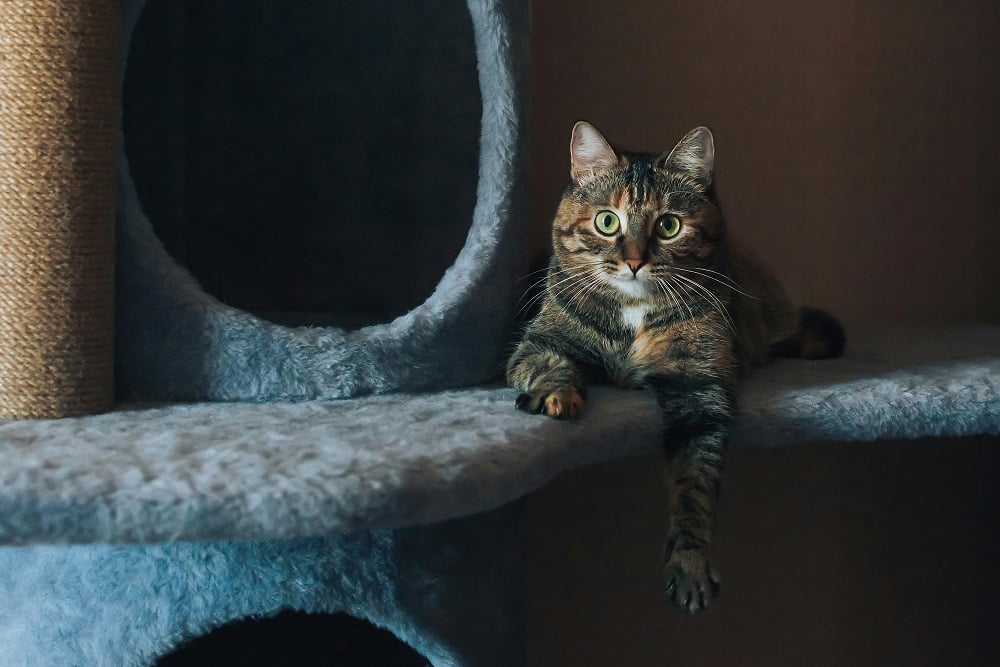
[ad_1]
In this article, we will discuss the importance of knowing when it’s time to replace your cat’s scratching post. Cats rely on scratching posts to fulfill their natural instincts, maintain healthy claws, and mark their territory. Over time, scratching posts can wear out or become less appealing to your feline friend. By recognizing the signs that indicate it’s time for a replacement, you can ensure that your cat continues to have a safe and satisfying scratching experience.
How Often Should You Replace Your Cat’s Scratching Post?
Scratching posts can vary in durability depending on the materials used and the amount of use they receive. As a general rule of thumb, it’s a good idea to inspect your cat’s scratching post regularly for signs of wear and tear. If you notice fraying carpet, loose sisal rope, or a wobbly structure, it may be time to replace the post.
Additionally, if your cat seems uninterested in using their scratching post or starts scratching furniture instead, it could be a sign that the post is no longer providing the desired scratching surface. In these cases, it’s best to invest in a new scratching post to keep your cat engaged and prevent damage to your belongings.
What Are the Benefits of a New Scratching Post?
Replacing your cat’s scratching post when needed offers several benefits for both your cat and your household. A new scratching post provides a fresh surface for your cat to scratch, which can help maintain their claw health and prevent them from seeking out alternative scratching surfaces like furniture or walls.
Furthermore, a new scratching post can reignite your cat’s interest in scratching and play, promoting physical activity and mental stimulation. By regularly rotating and replacing scratching posts, you can keep your cat engaged and satisfied while preserving your furniture and decor.
How Can You Encourage Your Cat to Use a New Scratching Post?
Introducing a new scratching post to your cat’s environment may require some encouragement and positive reinforcement. Placing the scratching post in a prominent and accessible location, such as near their favorite resting spots or along their usual walking paths, can entice your cat to investigate and use the post.
You can also use treats, toys, or catnip to attract your cat to the new scratching post and reward them for using it. Over time, your cat will associate the post with positive experiences and may be more likely to choose it over other surfaces for scratching.
What Are Some Signs That Your Cat Needs a Different Type of Scratching Post?
While some cats may prefer traditional vertical scratching posts, others may be more inclined to scratch on horizontal surfaces, such as scratching pads or mats. If you notice that your cat consistently ignores their current scratching post or shows a preference for other textures or orientations, it may be time to try a different type of scratching post.
Observing your cat’s scratching behavior and preferences can help you determine the best type of scratching post for their needs. Experimenting with different materials, shapes, and sizes can help you find the perfect scratching post that keeps your cat happy and your furniture intact.
How to Refurbish/Restore a Cat Tree & Scratching Post – NO GLUE
Conclusion
Knowing when to replace your cat’s scratching post is essential for maintaining your cat’s health and well-being. By monitoring the condition of the post, observing your cat’s scratching behavior, and providing a variety of scratching options, you can ensure that your feline friend has a satisfying and safe outlet for their natural instincts. Investing in a new scratching post when needed can enhance your cat’s quality of life and protect your home from unwanted scratching damage.
FAQs
1. How can I prevent my cat from scratching furniture?
Providing your cat with a suitable scratching post and regularly replacing it when needed can help redirect their scratching behavior away from furniture. You can also use deterrents like double-sided tape or citrus sprays on furniture to discourage scratching.
2. Is it better to have multiple scratching posts in different areas of the house?
Having multiple scratching posts in various locations can help cater to your cat’s scratching preferences and prevent them from becoming bored with a single post. Consider placing scratching posts in areas where your cat spends the most time.
3. Can I train my cat to use a scratching post?
Yes, you can train your cat to use a scratching post by rewarding them with treats or toys when they use the post and gently redirecting them from inappropriate scratching surfaces. Consistency and positive reinforcement are key to successful training.
4. What should I do if my cat refuses to use a scratching post?
If your cat is reluctant to use a scratching post, try experimenting with different materials, textures, and orientations to find one that appeals to them. You can also consult with a veterinarian or animal behaviorist for additional guidance.
5. How long should a scratching post last before needing replacement?
The lifespan of a scratching post can vary depending on the quality of materials and the amount of use it receives. On average, a scratching post may need replacement every 6 months to 2 years, but it’s important to monitor the condition and usability of the post regularly.
[ad_2]
